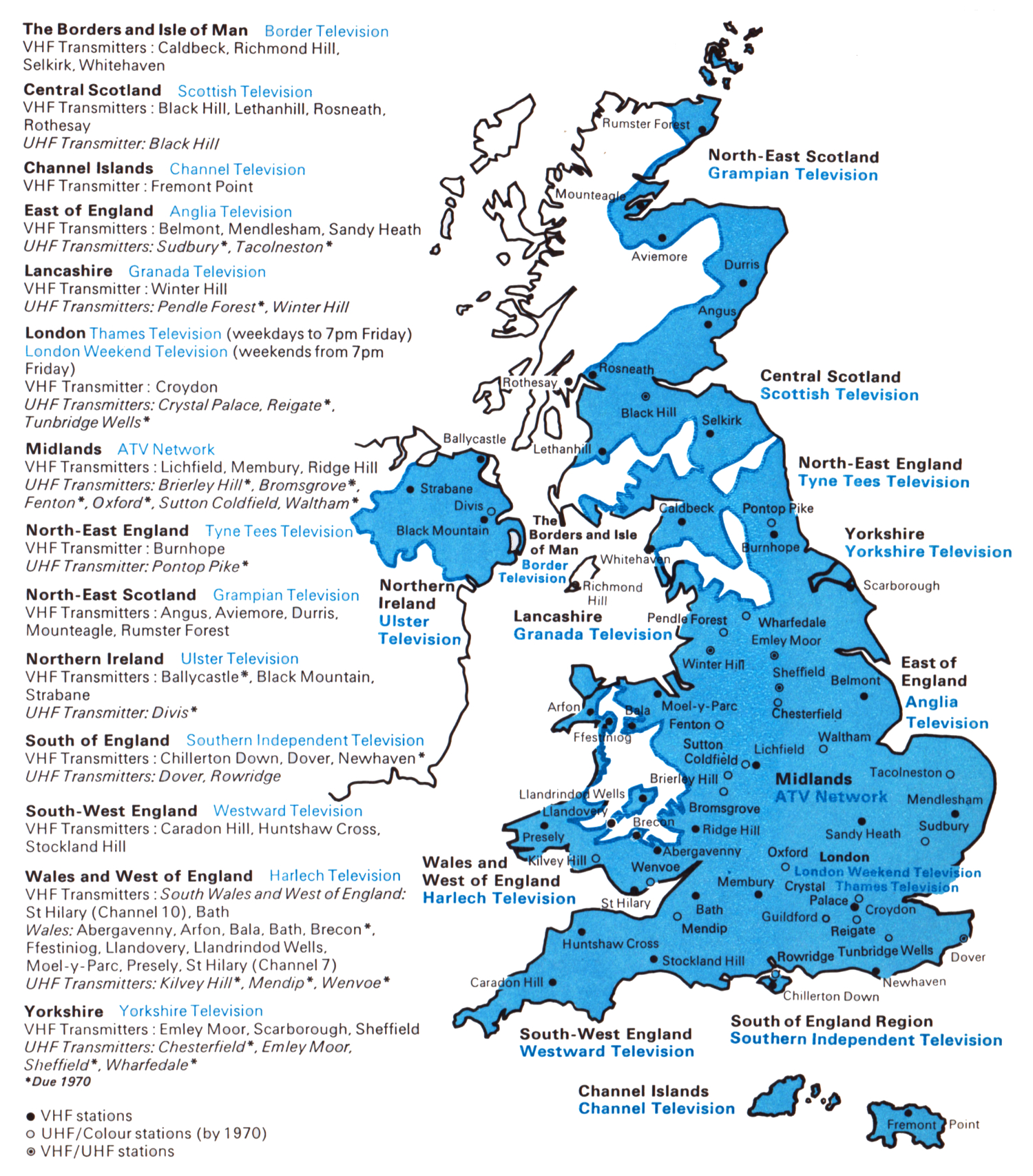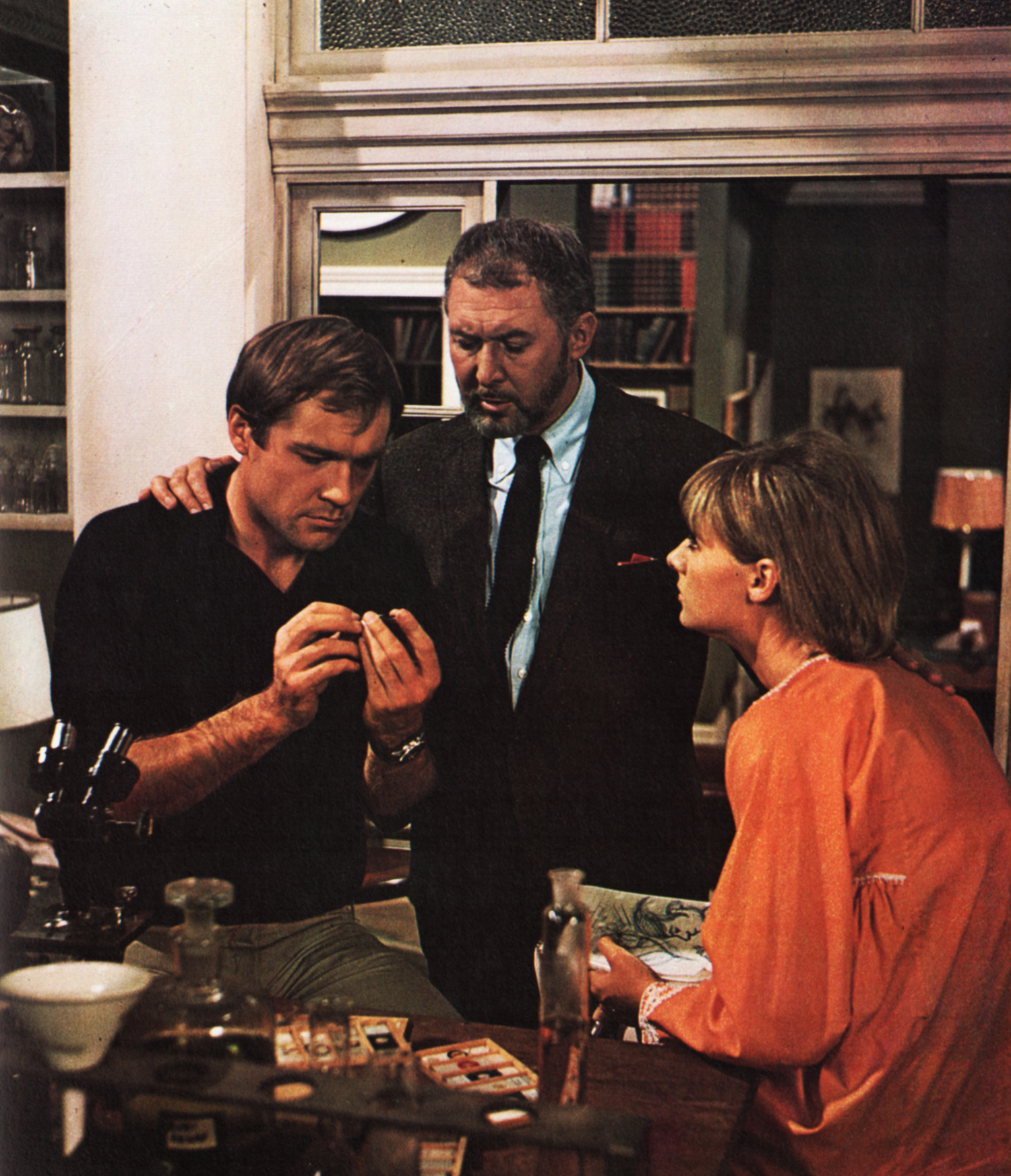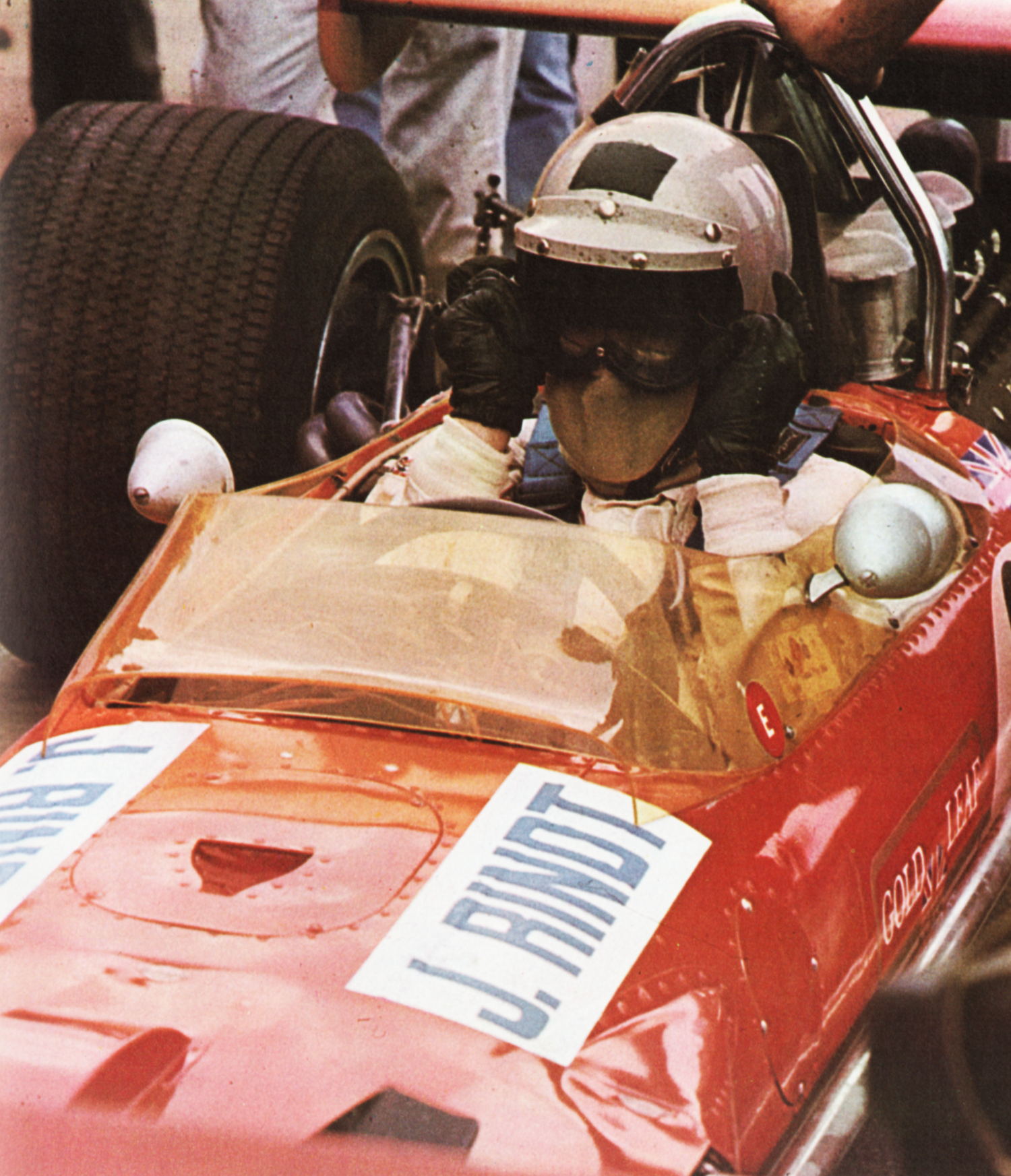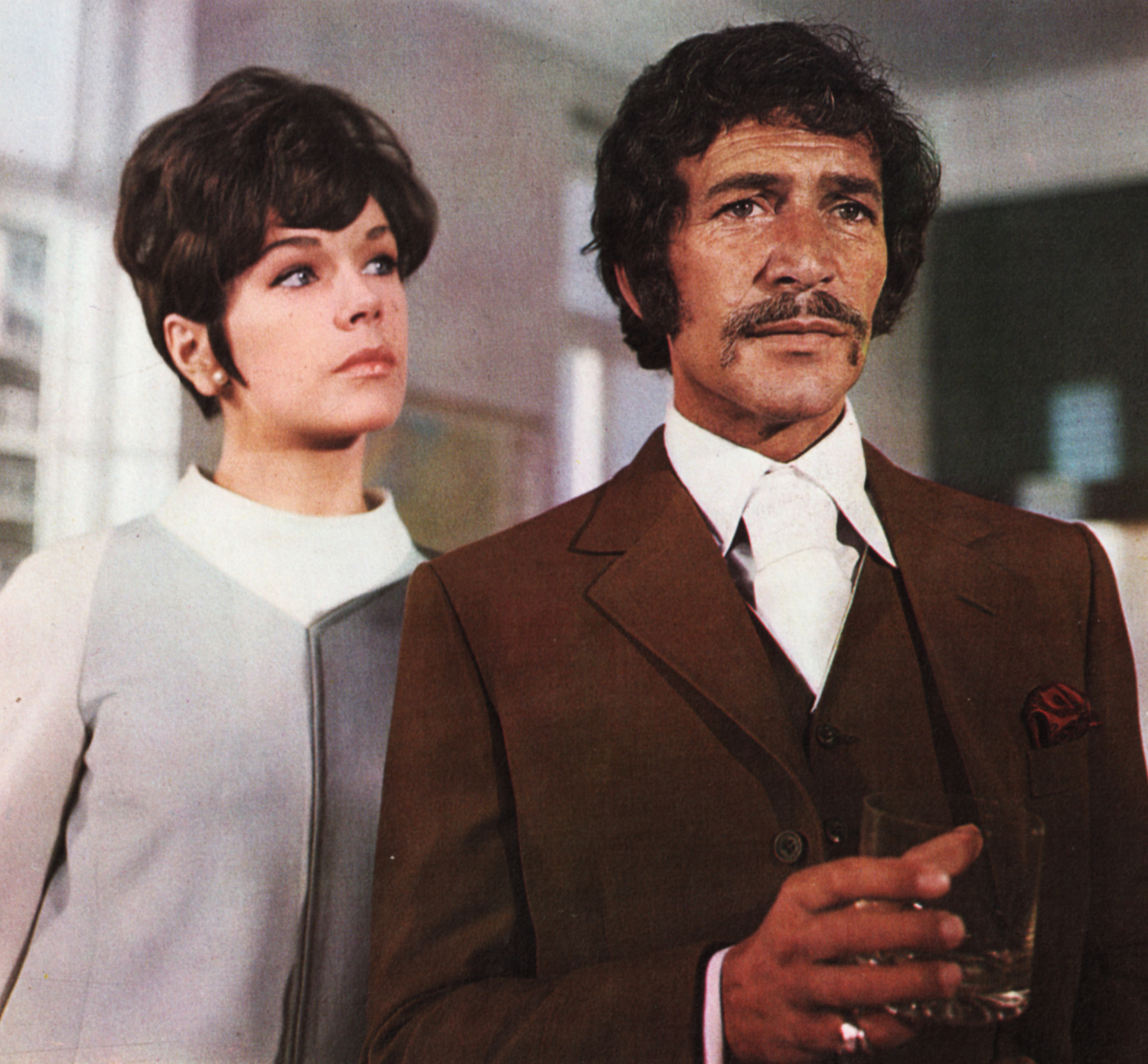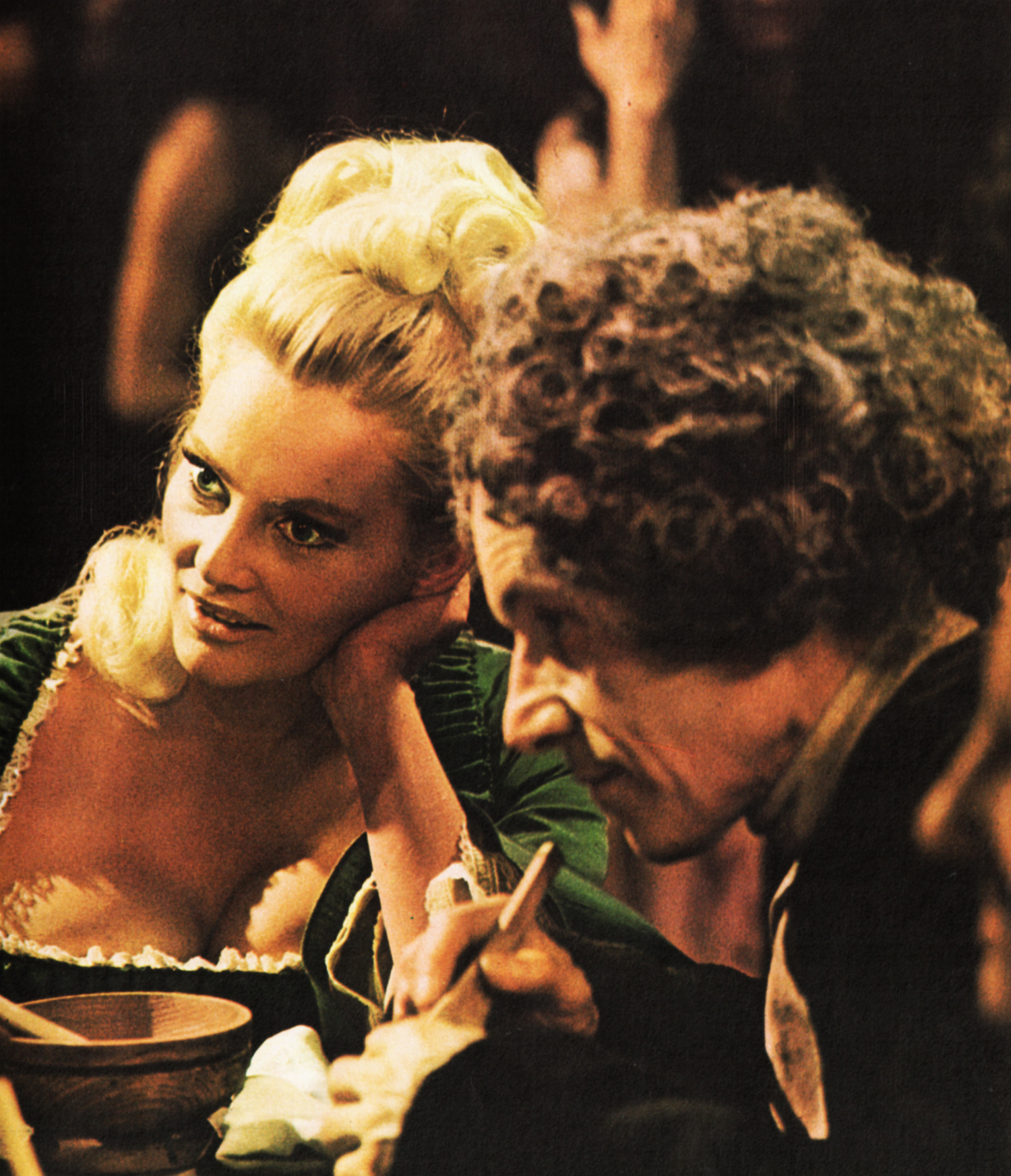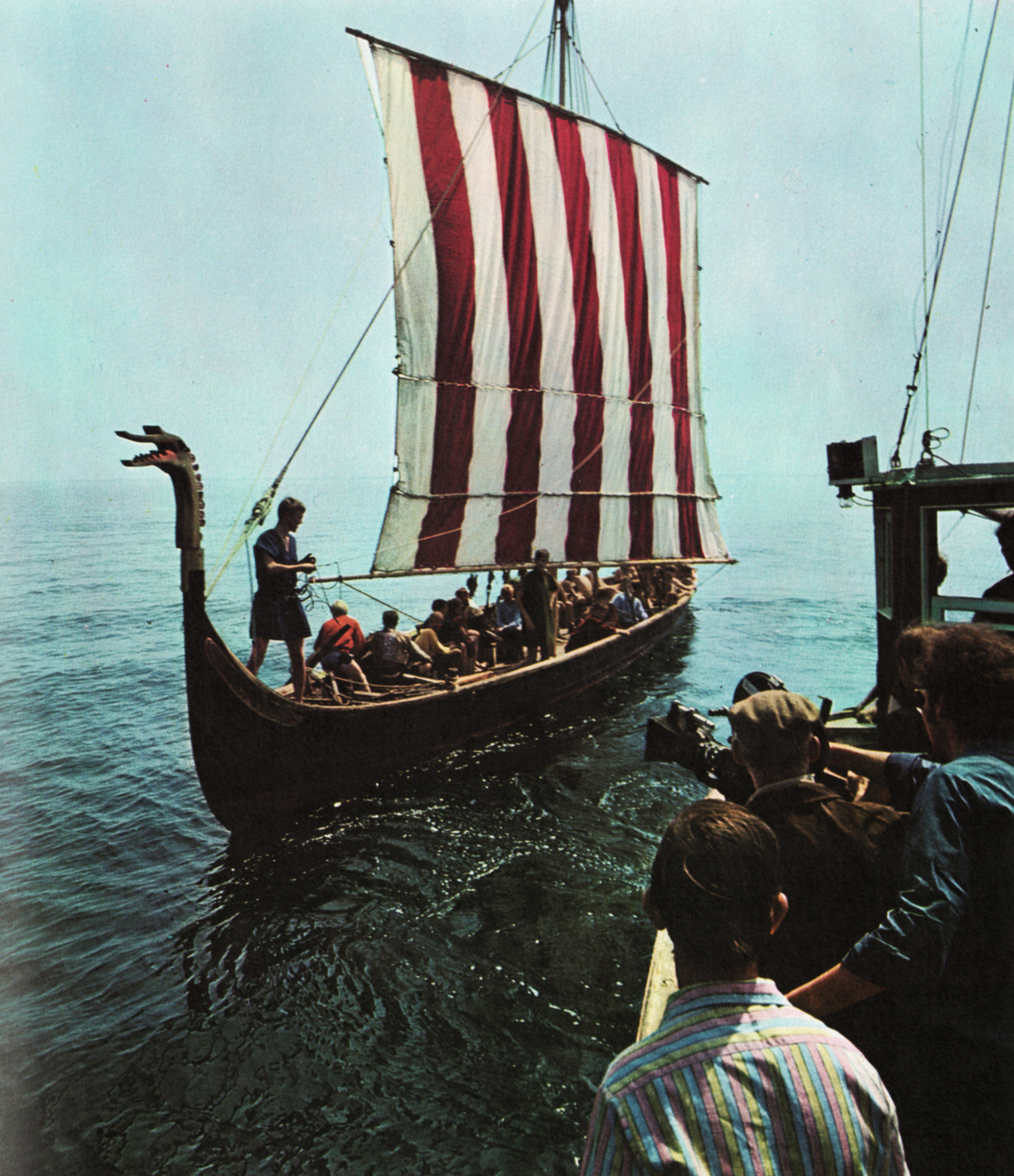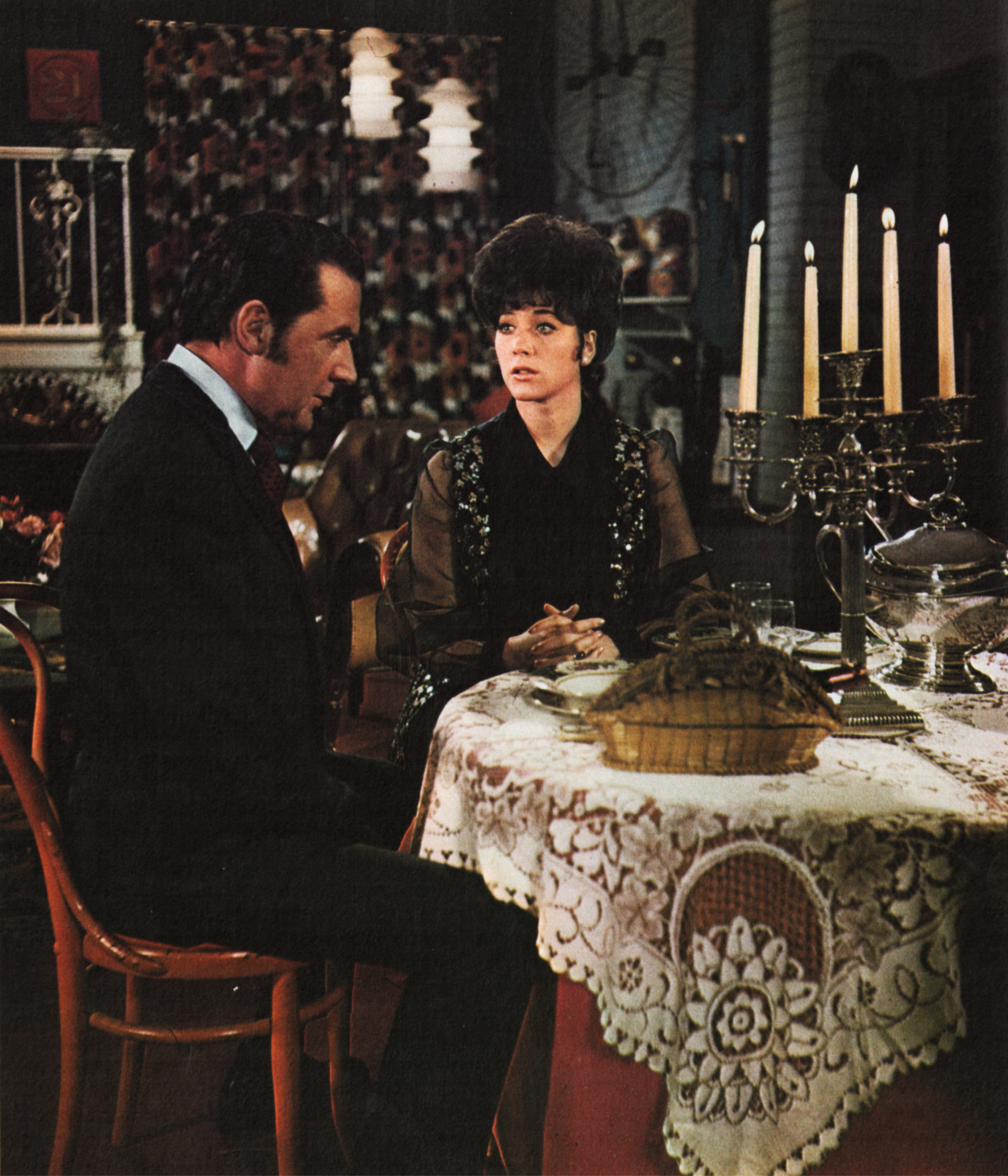625-line
Facts about the ITA Colour Network
The most striking endorsement yet of the merits of Colour Television – that is how the Independent Television Authority regards its engineering plans for the new multi-million-pound network of 625-line, UHF transmitters designed to provide compatible pictures in either black-and-white or in colour.
In some areas, before the end of 1969, over 50 percent of all Independent Television programmes are expected to be transmitted in colour as well as in black-and-white. This percentage is expected to build up rapidly, with the vast majority of programmes in peak viewing times going out in colour. Altogether, viewers should have the choice of well over 100 hours each week of three-channel colour (ITV, BBC1 and BBC2).
The new UHF service must inevitably take some years to reach as many viewers as the existing VHF network. The service, for national coverage, may require as many as 60 main transmitters and many hundreds of relay stations.
But almost half of the population will be reached by the first seven main stations, being planned for operation in 1969, and as many as four out of five of the population should be within range of an ITA UHF/Colour station by about the end of 1971.
The network of stations is being planned jointly by the ITA, the BBC and the Post Office. The ITA and the BBC will share the sites and masts, some of which are already in use for BBC2. This will allow viewers to receive all UHF transmissions in a particular district with one receiving aerial of the correct group.
The PAL colour television system adopted in Britain consists of a standard monochrome signal with a separate colour signal encoded into the transmission. This means that ordinary monochrome television sets can ignore the colour information and provide a high quality black-and-white picture. For colour reception, a special colour receiver is needed, but this can show also programmes in black-and-white.
Some idea of the magnitude of this ambitious engineering project can be gathered from the fact that the ITA VHF 405-line network – built up over 14 years – consists of just over 40 transmitters including low-power relay stations. Now ITA are starting again from scratch – with the final objective of a network having well over ten times the number of VHF transmitters.
This involves not only ITA – which is spending more than £10 million [£171 million in 2019 allowing for inflation] on the first phase of this project – but also the associated programme companies who are simultaneously having to change studio equipment – cameras, lighting, videotape recorders, film telecine machines and all the other paraphernalia of modern television broadcasting – all in readiness for 625-line colour.
From the ITA transmitters will come all the established favourite Independent Television programmes in colour from some 40 colour-equipped studios – with the new experience of seeing what advertisers also can do to underline the impact of colour.
Many programme companies have already valuable experience in producing colour programmes for export – and many will testify to the excitement of seeing on closed circuit previews many of the Top Twenty programmes in colour.

Your questions answered
How do I watch Independent Television programmes now?
By means of one of some forty ITA VHF transmitters, operating in Band III (channels 6 to 13). These stations send out all ITV programmes on the 405-line system in monochrome (black-and-white television). Signals from these stations reach you either directly from your own aerial, or via one of the wired Relay systems.
Will I be able to continue to receive these VHF transmissions in future?
Yes, certainly for some years to come. But in many areas you will soon be able to receive the same ITV programmes, often rather better, on the shorter UHF wavelengths (Bands IV and V, channels 21 to 34 and 39 to 68).
But why should these new UHF transmissions be any better than what I get now?
The new UHF stations will transmit in colour and with the newer 625-line system, and are thus capable of providing pictures with better definition and less visible ‘line’ effects. As you have probably noticed, all television pictures are really made up of a series of horizontal lines. On the bigger screens this line structure can be easily seen, and limits the overall quality of the picture. You may remember that the 405-line system was introduced as long ago as 1936 when Britain began the world’s first regular high-definition television service.
Will I need to have a new receiver to watch ITA UHF 625-line transmissions?
Not for black and white reception if you already have a receiver capable of getting BBC2 transmissions. This should be quite suitable, without any changes, for ITA/UHF. On the other hand, an older 405-line-only VHF receiver will not be able to pick up ITA/UHF, although this should continue, at least for some years to come, to provide exactly the same service from ITA/VHF as at present.
But do you consider that 625-line pictures show a real advantage over those of the 405-line system?
It would be misleading to suggest that the improvement of 625 over 405 lines is a dramatic one. But it represents a useful gain of overall picture quality for the more discriminating viewer, particularly those with the larger 23-inch screens.
But will the actual programmes be the same on UHF as they are on VHF?
Yes, this is a process of ‘duplication’, not a new programme network.
And is the fact that the transmissions will be on the 625-line system the only major advantage of the new UHF stations?
No. While all British 405-line VHF transmissions are limited to black-and-white (monochrome) television, most of the UHF transmissions will carry the additional information required for full colour pictures. And, in addition, the UHF transmissions should suffer less from certain forms of electrical interference, including the spots produced by the ignition systems of passing cars.
But to see the pictures in colour, I will need a colour receiver?
Yes. A monochrome receiver cannot normally be converted for colour reception. On the other hand, programmes sent out in 625-line colour can be viewed on a standard UHF receiver in black-and-white. And the colour receiver reproduces monochrome transmissions in black-and-white.
But let me get this clear – the ITV colour programmes which will go out on UHF will be the same as those which will also be radiated on VHF in black-and-white?
That is correct – though we believe that programmes seen in colour add a totally new dimension to their enjoyment and impact.
Suppose I already have a colour receiver, or intend to obtain one before the ITA colour transmissions begin – will this be suitable? And in the meanwhile can I use this receiver to watch the VHF transmissions of ITA and BBC1?
Yes to both questions. Any colour receiver suitable for the reception of present BBC2 colour transmissions will equally be suitable for ITV and BBC1 colour. And dual-standard colour receivers will provide reception of the monochrome transmissions on VHF. However, once ITA and BBC1 UHF transmissions begin, it can be expected that single-standard (625-line only) receivers will appear on the market – these would not be suitable for 405-line VHF transmissions.
But will I need new aerials for all these different UHF stations? I already have two different VHF aerials and a UHF aerial on my roof.
No, there should be no need for more than one UHF aerial – and this will usually be lighter and more compact than the older VHF aerials. A single UHF aerial should be quite capable of giving good reception of all the local UHF transmissions, whether from ITA, BBC1 or BBC2 stations.
But I believe that my UHF aerial is highly directional and had to be very carefully pointed towards the BBC2 station – surely this will not be right for an ITA station?
All the UHF transmitters, whether for ITA or BBC, are being installed at the same sites and will use the same aerial masts or towers, so that the signals will come from exactly the same direction.
So since I already receive BBC2 signals on my UHF aerial, is it quite certain that I will receive ITA/UHF without any changes or adjustments whatsoever?
This, we hope, will usually be the case; though it is possible that in some instances a certain amount of adjustment or even re-positioning of a UHF aerial may be needed in order to receive equally good signals from ITA and BBC UHF transmitters. But this should be the exception rather than the rule.
And the same UHF aerial would be suitable for either black-and-white or colour reception?
Fundamentally, the aerial requirements for colour and black-and-white reception are the same. An aerial which gives really good black-and-white pictures will be equally suitable for colour. But on the other hand, an inadequate or poor aerial would have a much more noticeable effect on colour reception than on black-and-white. It is thus always advisable to have an efficient roof or loft aerial for colour reception, and, if possible, also for black-and-white reception. Your local dealer or rental company should be able to advise you on a suitable type of aerial for your particular location. Typically a UHF aerial having about six compact elements will be suitable in areas of good signal strength; about 10 to 12 elements for medium strength areas; and more than 12 elements, either in a single array or distributed in ‘stacked’ forms (two or more smaller arrays correctly used together), for longer distances or where your house is screened from the transmitter. It is always better to have too much signal than too little – and a good aerial, well installed, is likely to prove the cheapest in the long run. Since the length of a UHF aerial element is only a few inches, even aerials with many elements are often more compact and lighter than those with far fewer elements for VHF.
Is there any possibility that although I now obtain good ITV pictures on VHF, I shall not get a good service on UHF?
It will take some years before the new ITA UHF network can cover as much of the country as is reached on VHF, so that for some time to come there will be areas where only VHF will give good pictures. The satisfactory service area of a UHF station is usually appreciably less than for an equivalent station on VHF. For this reason the ITA UHF network is likely, eventually, to comprise some sixty main transmitting stations and some hundreds of lower power relay stations to serve particular localities. But it is hoped to serve some four out of every five persons in the UK on UHF by roughly the end of 1971 – and the first seven stations will cover about half of the population, by about the end of 1969.
You said that only one UHF aerial should be needed for all three UHF services – does this mean that once the UHF signals are available I can stop using VHF altogether and take down the VHF aerials on my roof?
Once you are able to watch ITA, BBC1 and BBC2 all on UHF, on the 625-line system (and in colour if you are lucky enough to have a colour receiver), there would be little point in watching the same programmes on VHF. Eventually, it is possible that there may be additional programmes using 625-lines on VHF, but this cannot happen for many years to come.
So you hope that, despite the shorter range of UHF transmissions, the UHF network, when complete, will cover the country roughly as well as the present VHF network?
That is true but it must be stressed that a large network of this type cannot be built overnight. There will be some areas where UHF coverage will not be complete for a considerable number of years. But you can be sure that ITA will press forward with building the new UHF network as fast as possible.
So the new network must represent a busy time for the ITA engineers then?
Busy indeed. The building of this new UHF 625-line colour network represents one of the most intensive television engineering projects ever undertaken – for your better and more colourful viewing.

A brief guide to some television terms
The term UHF means ‘ultra high frequencies’ and in this connection refers to television stations operating in Bands IV and V. That is in Channels 21 to 34 and 39 to 68, using radio frequencies between 470 and 850 Megahertz.
The term VHF means ‘very high frequencies’ and refers to television stations in Band III (Channels 6 to 13, using frequencies between 174 and 216 Megahertz).
The ‘405-line system’ is the television system or ‘standard’ used in Great Britain since 1936, and currently used for all VHF television stations in Bands I and III.
Adoption of the alternative ‘625-line system’ as the primary British television system of the future resulted from official Government planning for British television, and has been in use for British UHF television transmissions since 1964.
The difference in line structure (i.e. number of horizontal lines making up the picture) between the 405 and 625-line systems is only one of a considerable number of differences between the two standards.
Eventually, the 625-line system may be used in the United Kingdom for VHF transmissions, as well as for UHF, but this is unlikely to happen for many years yet, during which the 405-line standard will continue to be used on VHF.
A ‘single standard’ receiver is a set intended for reception of pictures on only one standard. At one time this usually meant 405-line-only sets, but now often means 625-line-only sets.
A ‘dual standard’ receiver means a set capable of receiving both the 405-line and 625-line transmissions.
All British colour television transmissions are on 625-lines in UHF using a ‘compatible’ colour system which means that the pictures can also be received in black-and-white on a black-and-white-only receiver. Colour receivers can similarly pick up black-and-white-only transmissions and display them in black-and-white (‘reverse compatibility’).


